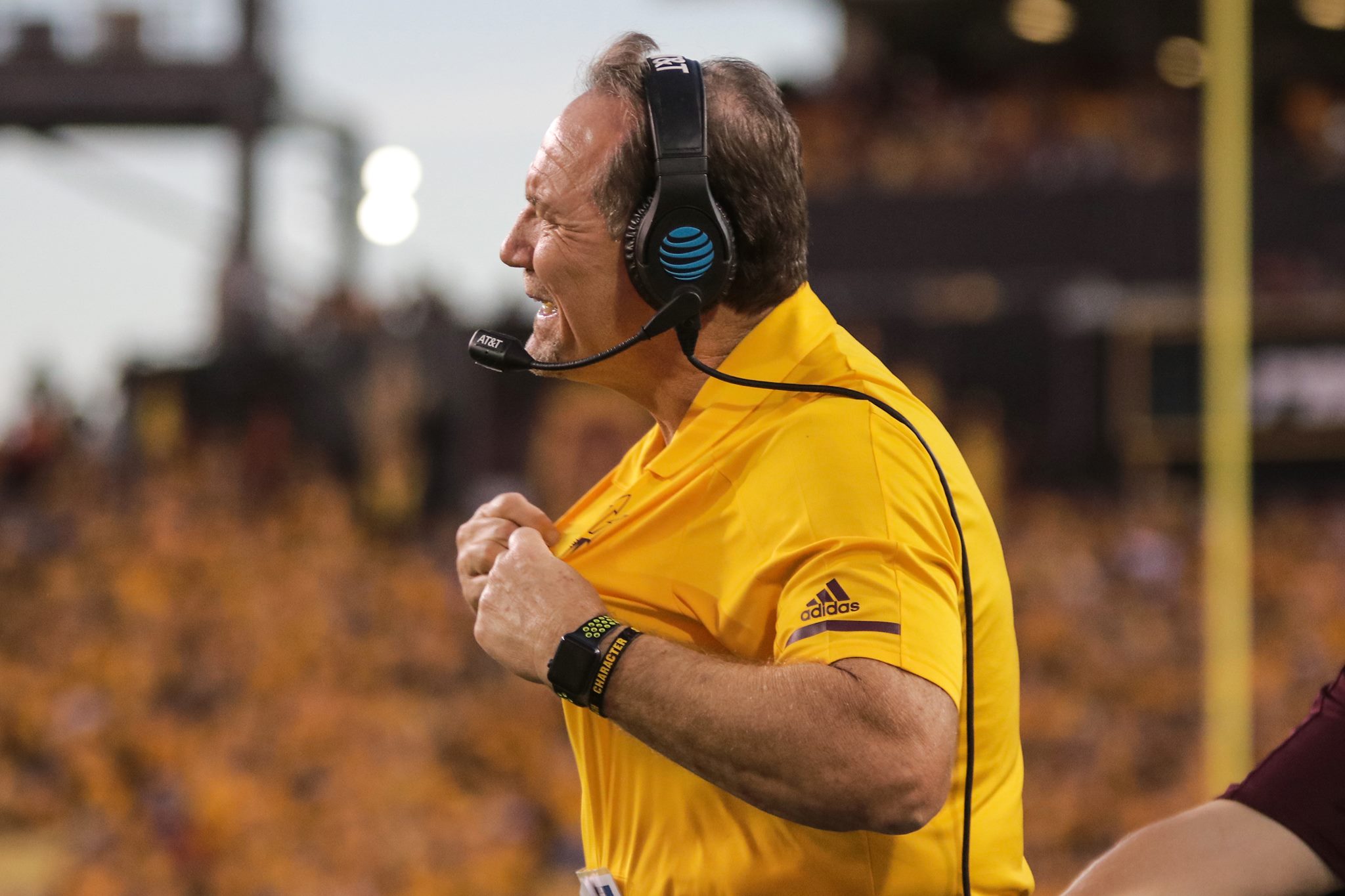(Photo: Nicholas Badders/WCSN)
In the past, Todd Graham has been the darling of Arizona State football media availability, most days answering question for at least 10 minutes.
On Friday though, the lame-duck head coach spoke for barely 2 minutes, the latest reminder of the winds of change that are swirling in Tempe these days.
Instead, ASU’s coordinators, and their future status at the school, got all the attention.
Offensive coordinator Billy Napier won’t be a victim of the coaching carousel after confirming earlier this week that he would be retained on new head coach Herm Edwards’ staff next season.
“I have a tremendous amount of respect for Herm and what he’s accomplished not only as a coach but as a player,” Napier said on Friday. “The more people that I’ve spoken with about him that have played with him or coached with him, you can tell that he is a stand-up guy.”
The rest of his offensive staff (receivers coach Rob Likens, running backs coach John Simon and offensive line coach Rob Sale) will also be back to ASU next fall, hoping to continue the notable progress the Sun Devils offense achieved this year.
“Continuity is a big deal. In particular, you don’t have to reteach coaches and you can transition right into the offseason after the bowl game and we can go into the next phase,” Napier said. “It’s not just what to do, but how to do it. All your routines stay intact. It’s a big deal for our football players.”
Scratch “big deal.” In quarterback Manny Wilkins’ opinion, Napier’s return is the some of the best news he’s heard in his 4 years in the program.
He is just one on the Sun Devils’ roster who will relish in the continuum in the coaching ranks.
“The kids are emotionally tied to the coaches,” Simon said on Saturday. “That’s the hardest thing, when you see transitions like this…It’s great to have the opportunity [to stay] for the kids, especially here where the kids have had so much change.”
ASU averaged more than 420 yards per game this year, a near-40-yard improvement over the 2016 squad coordinated by Chip Lindsay. The Sun Devils also cut their turnovers in half, giving away the football just 11 times all season.
The whole staff attributed the advancements to the cohesion they shared on the sidelines.
“It’s all about trust. When you are a coordinator and you are calling plays, everybody has got to be on the right page,” Likens said “There’s a lot of education going on between the coaches. Once you click and everybody starts trusting everybody, you don’t have to worry about that part of it.”
Napier admitted to feeling some awkwardness in staying while the man who hired him is being shown the door, but said sticking at the school was the best decision for him and family.
“It’s a twist of emotions to some degree,” Napier said. “In particular because it happened so quickly. But it gives you time to reflect. My wife and three children are what’s most important when your taking into account these decisions. The old deal, ‘live by principle and not by pressure,’ that where it goes back to.”
On the other side of the ball, the future of ASU’s defensive staff at the school remains up in the air.
Phil Bennett, the Sun Devils’ 62-year-old defensive coordinator, had yet to meet with Edwards as of Friday afternoon (he was out of town during Edwards’ visit to campus for an introductory news conference earlier this week) and said he wouldn’t make any decisions until after sitting down with the incoming head coach face-to-face on Saturday.
“It’s got to be a fit for both of us,” Bennett said. “He’s got to make that decision. I have to see where I fit in with him.”
Bennett also said he met with athletic director Ray Anderson and senior associate athletic director Jean Boyd in the past week in addition to his preliminary phone conversations with Edwards, a man he said has a past relationship with.
“I know Herm and we’ve talked a few things,” Bennett said. “We have a little bit of a background. We are straight with each other.”
On the field this season — Bennett’s first with the team — the Sun Devil defense saw gains of its own, giving up 31.2 points per game, 8 points less than ASU’s 2016 unit.
“We’ve got miles to go before we sleep,” Bennett said. “But I do know this, we made improvement this year.”



